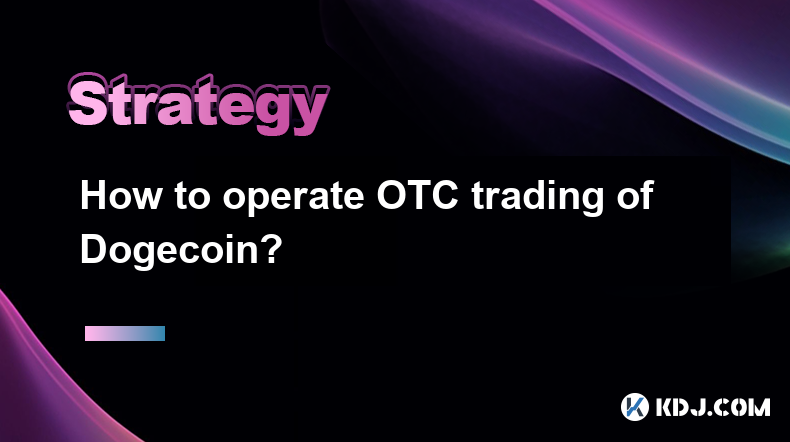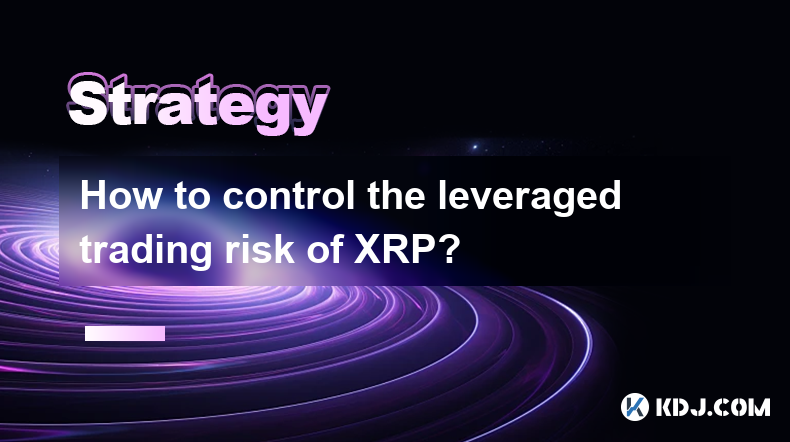-
 Bitcoin
Bitcoin $84,872.5168
0.09% -
 Ethereum
Ethereum $1,592.6984
0.72% -
 Tether USDt
Tether USDt $0.9998
-0.01% -
 XRP
XRP $2.0822
1.42% -
 BNB
BNB $592.3236
0.51% -
 Solana
Solana $137.6724
2.17% -
 USDC
USDC $0.9998
-0.02% -
 Dogecoin
Dogecoin $0.1588
3.01% -
 TRON
TRON $0.2411
-1.86% -
 Cardano
Cardano $0.6332
3.47% -
 UNUS SED LEO
UNUS SED LEO $9.2424
0.10% -
 Chainlink
Chainlink $12.7258
1.93% -
 Avalanche
Avalanche $19.2749
1.34% -
 Toncoin
Toncoin $3.0009
1.76% -
 Stellar
Stellar $0.2426
0.92% -
 Shiba Inu
Shiba Inu $0.0...01232
5.19% -
 Hedera
Hedera $0.1675
2.67% -
 Sui
Sui $2.1423
0.99% -
 Bitcoin Cash
Bitcoin Cash $338.3191
2.76% -
 Polkadot
Polkadot $3.7272
2.23% -
 Litecoin
Litecoin $76.2790
1.65% -
 Hyperliquid
Hyperliquid $17.1345
-0.36% -
 Dai
Dai $0.9999
-0.01% -
 Bitget Token
Bitget Token $4.4316
1.83% -
 Ethena USDe
Ethena USDe $0.9991
0.00% -
 Pi
Pi $0.6493
5.78% -
 Monero
Monero $214.9673
0.04% -
 Uniswap
Uniswap $5.2436
1.75% -
 Pepe
Pepe $0.0...07355
4.30% -
 OKB
OKB $50.5233
0.77%
How to operate OTC trading of Dogecoin?
OTC trading of Dogecoin offers privacy and flexibility for large trades; choose a reputable broker, set up an account, and negotiate terms to execute transactions securely.
Apr 17, 2025 at 03:08 am

How to operate OTC trading of Dogecoin?
Over-the-counter (OTC) trading of cryptocurrencies like Dogecoin offers an alternative to traditional exchange-based trading. OTC trading can be particularly advantageous for large volume trades, providing more privacy and flexibility. This guide will walk you through the steps and considerations for conducting OTC trades with Dogecoin.
Understanding OTC Trading
OTC trading involves buying and selling assets directly between two parties without the need for a centralized exchange. This method can be beneficial for trading large amounts of Dogecoin, as it often results in lower slippage and can be more discreet. OTC desks or brokers facilitate these trades, ensuring both parties meet and complete the transaction securely.
Choosing an OTC Broker
To begin OTC trading of Dogecoin, you first need to select a reputable OTC broker. Some well-known OTC brokers in the cryptocurrency space include Genesis Trading, B2C2, and Jump Trading. When choosing a broker, consider the following factors:
- Reputation: Look for brokers with a strong track record and positive reviews from other traders.
- Fees: Understand the fee structure, as OTC brokers typically charge a percentage of the trade value.
- Liquidity: Ensure the broker has sufficient liquidity to handle your desired trade size.
- Security: Check for robust security measures to protect your assets and personal information.
Setting Up an Account
Once you have selected an OTC broker, you will need to set up an account. Here are the steps to follow:
- Visit the broker's website and click on the "Sign Up" or "Register" button.
- Fill out the registration form with your personal information, including your name, email address, and phone number.
- Verify your identity by submitting the required documents, such as a government-issued ID and proof of address.
- Complete any additional KYC (Know Your Customer) and AML (Anti-Money Laundering) requirements as requested by the broker.
- Fund your account by depositing the necessary amount of Dogecoin or fiat currency, depending on your trading intentions.
Initiating a Trade
After setting up your account, you can initiate an OTC trade. Here's how to proceed:
- Contact your OTC broker via phone, email, or the broker's trading platform to express your interest in trading Dogecoin.
- Specify the trade details, including the amount of Dogecoin you want to buy or sell, the desired price, and any other terms or conditions.
- Negotiate the terms with the broker or the counterparty until you reach an agreement.
- Confirm the trade once all terms are agreed upon. The broker will facilitate the transfer of Dogecoin and payment between you and the counterparty.
Executing the Trade
Once the trade is confirmed, the execution process begins. Here are the key steps:
- The broker will provide you with the wallet address to send your Dogecoin to if you are selling, or the wallet address to receive Dogecoin if you are buying.
- Transfer the Dogecoin to the specified address if you are selling. If you are buying, ensure that the payment method you agreed upon is ready.
- Wait for the broker to confirm the receipt of Dogecoin or payment. This may take a few minutes to a few hours, depending on the network congestion and the broker's processing time.
- Once the broker confirms the transaction, the counterparty will receive the Dogecoin or payment, and the trade is complete.
Settlement and Record-Keeping
After the trade is executed, it's important to handle the settlement and keep records of the transaction. Here's what you need to do:
- Verify the settlement by checking your wallet or bank account to ensure you have received the Dogecoin or payment as expected.
- Keep detailed records of the trade, including the trade date, amount, price, and any fees incurred. This information is crucial for tax purposes and tracking your trading performance.
- Review the trade to ensure everything went smoothly and to identify any areas for improvement in future trades.
Risk Management
OTC trading of Dogecoin, like any trading activity, comes with risks. Here are some risk management strategies to consider:
- Diversify your trades to spread risk across different assets and counterparties.
- Set clear trading limits to avoid over-leveraging and potential losses.
- Use secure communication channels when discussing trade details with your broker or counterparty.
- Monitor market conditions and be prepared to adjust your trading strategy as needed.
Frequently Asked Questions
Q: Can I trade Dogecoin OTC if I'm a beginner?
A: Yes, beginners can participate in OTC trading of Dogecoin. However, it's crucial to thoroughly research and understand the process, as well as to choose a reputable OTC broker. Starting with smaller trades can help you gain experience before moving on to larger transactions.
Q: What are the typical fees associated with OTC Dogecoin trading?
A: OTC trading fees can vary widely depending on the broker and the size of the trade. Generally, fees range from 0.1% to 1% of the trade value. It's important to discuss and agree on the fee structure with your broker before initiating a trade.
Q: How long does it take to complete an OTC Dogecoin trade?
A: The duration of an OTC trade can vary from a few minutes to several hours. Factors influencing the timeline include the size of the trade, the broker's processing time, and the speed of the Dogecoin network. Always confirm the expected timeline with your broker before proceeding.
Q: Is it possible to trade Dogecoin OTC anonymously?
A: While some OTC brokers may offer more privacy than traditional exchanges, complete anonymity is challenging due to KYC and AML regulations. It's important to balance privacy concerns with the need to comply with legal requirements when engaging in OTC trading.
Disclaimer:info@kdj.com
The information provided is not trading advice. kdj.com does not assume any responsibility for any investments made based on the information provided in this article. Cryptocurrencies are highly volatile and it is highly recommended that you invest with caution after thorough research!
If you believe that the content used on this website infringes your copyright, please contact us immediately (info@kdj.com) and we will delete it promptly.
- Shiba Inu (SHIB) Breaks Out of Critical Resistance Level, Targeting Another Zero-Loss Event
- 2025-04-19 10:20:13
- The Need for Standardized Data in the Decentralized Finance (DeFi) Market
- 2025-04-19 10:20:13
- Ruvi AI (RUVI) is Becoming the Real Disruptor in the Blockchain Space
- 2025-04-19 10:15:12
- Lung cancer diagnostics developer Lung Life AI (LON: LLAI) still plans to leave AIM following its US distribution deal
- 2025-04-19 10:15:12
- Despite This Recovery, New Technical Signals Suggest XRP May Be Heading for a Bearish Correction, Potentially Dipping to $1.60
- 2025-04-19 10:10:13
- Hedera Hashgraph (HBAR) Price Prediction: Can CCIP Launch Propel HBAR to New Highs?
- 2025-04-19 10:10:13
Related knowledge

What does SHIB's Cardano coefficient below 0.3 indicate?
Apr 19,2025 at 08:00am
What does SHIB's Cardano coefficient below 0.3 indicate? The Cardano coefficient, often used within the cryptocurrency community, is a metric that helps investors and analysts understand the correlation between different cryptocurrencies. When it comes to SHIB (Shiba Inu) and its Cardano coefficient falling below 0.3, this indicates a relatively low cor...

Should I reverse the operation when the long-short ratio of SHIB perpetual contract reaches 3:1?
Apr 19,2025 at 04:36am
Understanding the Long-Short Ratio in SHIB Perpetual ContractsThe long-short ratio is a key metric in the world of cryptocurrency trading, particularly when dealing with perpetual contracts. For SHIB (Shiba Inu) perpetual contracts, this ratio indicates the balance between traders who are betting on the price of SHIB to rise (long positions) and those b...

Where is the average cost line for short-term holders of SHIB?
Apr 19,2025 at 03:42am
The average cost line for short-term holders of SHIB, or Shiba Inu cryptocurrency, is a critical indicator that provides insights into the behavior and sentiment of investors who have held the token for a shorter duration. This line represents the average price at which these short-term holders acquired their SHIB tokens. Understanding where this line s...

What should I do after the head and shoulders top pattern of XRP appears?
Apr 19,2025 at 01:28am
The head and shoulders top pattern is a significant technical analysis indicator that many traders and investors in the cryptocurrency market, including those involved with XRP, pay close attention to. When this pattern appears in the price chart of XRP, it is often interpreted as a bearish signal, suggesting that a reversal in the current uptrend may b...

What does it mean for XRP to confirm the breakout of the previous high and then step back?
Apr 19,2025 at 04:42am
What does it mean for XRP to confirm the breakout of the previous high and then step back? In the world of cryptocurrency, technical analysis plays a crucial role in understanding market movements and potential future trends. One specific scenario that traders and investors often analyze is when a cryptocurrency, such as XRP, confirms the breakout of a ...

How to control the leveraged trading risk of XRP?
Apr 18,2025 at 09:50pm
Leveraged trading of XRP, like any other cryptocurrency, involves significant risk due to the high volatility of the market. Understanding and controlling these risks is crucial for any trader looking to engage in leveraged trading. This article will guide you through the essential steps and strategies to manage the risks associated with leveraged tradi...

What does SHIB's Cardano coefficient below 0.3 indicate?
Apr 19,2025 at 08:00am
What does SHIB's Cardano coefficient below 0.3 indicate? The Cardano coefficient, often used within the cryptocurrency community, is a metric that helps investors and analysts understand the correlation between different cryptocurrencies. When it comes to SHIB (Shiba Inu) and its Cardano coefficient falling below 0.3, this indicates a relatively low cor...

Should I reverse the operation when the long-short ratio of SHIB perpetual contract reaches 3:1?
Apr 19,2025 at 04:36am
Understanding the Long-Short Ratio in SHIB Perpetual ContractsThe long-short ratio is a key metric in the world of cryptocurrency trading, particularly when dealing with perpetual contracts. For SHIB (Shiba Inu) perpetual contracts, this ratio indicates the balance between traders who are betting on the price of SHIB to rise (long positions) and those b...

Where is the average cost line for short-term holders of SHIB?
Apr 19,2025 at 03:42am
The average cost line for short-term holders of SHIB, or Shiba Inu cryptocurrency, is a critical indicator that provides insights into the behavior and sentiment of investors who have held the token for a shorter duration. This line represents the average price at which these short-term holders acquired their SHIB tokens. Understanding where this line s...

What should I do after the head and shoulders top pattern of XRP appears?
Apr 19,2025 at 01:28am
The head and shoulders top pattern is a significant technical analysis indicator that many traders and investors in the cryptocurrency market, including those involved with XRP, pay close attention to. When this pattern appears in the price chart of XRP, it is often interpreted as a bearish signal, suggesting that a reversal in the current uptrend may b...

What does it mean for XRP to confirm the breakout of the previous high and then step back?
Apr 19,2025 at 04:42am
What does it mean for XRP to confirm the breakout of the previous high and then step back? In the world of cryptocurrency, technical analysis plays a crucial role in understanding market movements and potential future trends. One specific scenario that traders and investors often analyze is when a cryptocurrency, such as XRP, confirms the breakout of a ...

How to control the leveraged trading risk of XRP?
Apr 18,2025 at 09:50pm
Leveraged trading of XRP, like any other cryptocurrency, involves significant risk due to the high volatility of the market. Understanding and controlling these risks is crucial for any trader looking to engage in leveraged trading. This article will guide you through the essential steps and strategies to manage the risks associated with leveraged tradi...
See all articles
























































































